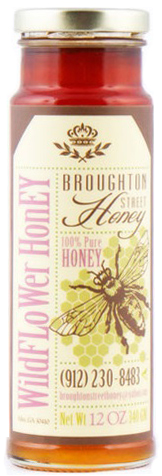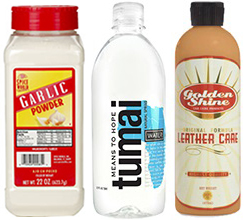Adding custom pressure sensitive labels to your packaging is a great way to make your product stand out – but what type should you choose? If you’ve looked online or asked people about pressure sensitive labels, you’ll quickly find out that there are hundreds of different ways you can go. Whether it’s through materials, the label shape, your artwork, or even the print method, you can customize your pressure sensitive labels to best fit your labeling needs. Here are some tips to consider when choosing a pressure sensitive label for your packaging.

The Three S’s
When it comes to labeling containers with pressure sensitive labels, remember the three S’s – shape, size and surface. There are other factors to take into consideration (like temperature at time of label application, which you can read more about in our adhesive guide) but to keep things simple, we’ll stick with the biggest factors.
- Shape: Bottles are usually cylindrical but some have a curve or it tapers. Other popular containers, like boxes and cartons, are square or rectangular. Whichever type of container you have will influence the shape and size of your pressure sensitive labels. Bottles that don’t have a curve or a taper are easy to label since most label shapes can wrap around the bottle. Boxes and cartons have four sides so the label can be applied on one of the flat surfaces or it can be printed long enough to wrap around the box.
- Size: Knowing the bottle’s circumference and height – or if you’re applying the label to a square shaped container, the surface area of the flat surface – will help you determine what label sizes can work with the container. Check out our label size calculator and bottle measuring guide to help you determine a label size for your pressure sensitive labels.
- Surface: Pressure sensitive labels stick best to smooth, clean, dry surfaces but sometimes that’s not always possible. We offer label stocks with more aggressive adhesives in case your container’s surface isn’t smooth or particles like dust can’t be avoided due to the packaging process. Discuss with your container supplier, co-packer, or product development team to see if there are any special considerations that need to be addressed before labels are ordered.
You can also send us a sample container to get shape and size suggestions from our customer service team. Now that you have a better understand of the relationship between containers and labels, let’s see which materials are popular for pressure sensitive labels.
Selecting a Material for Pressure Sensitive Labels
Pressure sensitive label materials are designed to work with most container shapes and sizes. When it comes to selecting a material, cost, label style, and durability requirements should be the main considerations. Here are some examples of pressure sensitive stocks that work for different labeling needs:

- Glossy white paper: Bright white, smooth and glossy – this paper material works for a variety of markets due to its quality and economical price tag. We also offer matte white paper which gives a different look and feel to pressure sensitive labels.
- Clear transparent film: With its long-lasting waterproof capabilities and transparent appearance, clear pressure sensitive labels can blend into a container for a “no label” look. This type of label works well for beverages, food, bath, and beauty products.
- Metalized silver paper: Labels printed on metalized silver paper tend to stand out more due to their eye-catching shine. This material works best for indoor use but we also offer foil film (aka brushed silver polyester) if you need a more rigid, durable material. Both metalized silver paper and foil film can be tinted to a variety of colors.
- Flexible film: Labels for squeezable bottles should be printed on flexible white or clear polyolefin (a type of film material) because they’re designed not to lose their original look and shape after being squeezed.
For more information on label materials for pressure sensitive materials, check out our short and sweet materials guide or stop by our Label Material Types page. We would also be happy to send you samples to give you an up-close look at different pressure sensitive labels.
When buying pressure sensitive labels, it’s a good idea to have your container information and label goals prepared in advance to ensure that everyone is on the same page. Our customer service reps have years of label experience and can help you navigate the world of custom label printing and they are an excellent resource to learn more pressure sensitive labels and printing, along with our blog and extensive video library!


